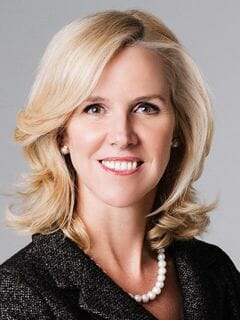April 2, 2024 - On March 27th, the National Association of Women Lawyers, the American College of Commercial Finance Lawyers, and the LSTA jointly hosted a webinar on Developments in Sustainable Lending which was presented by expert panelists, Emily Follas of JPMorgan Chase, Laura Monte of HSBC, and Tess Virmani of the LSTA.
The area of sustainable lending has grown significantly since 2017. Bloomberg reports that there are now over $3 trillion green bonds and loans outstanding. Green loans and sustainability linked loans (SLL) started in Europe. Europe pioneered these instruments, then North America embraced them, and finally Asia, a relative newcomer to the space, is also now seeing significant growth.
The presenters focused on the two basic structures found in the loan space. First green loans and the use of proceeds loans – here the classification of the loans as sustainable instruments is tied directly to the use of the loans. The use of proceeds for green loans is the key determinant and includes any type of loan where 100% of proceeds are used to finance/refinance one or more “green projects”. Second, the sustainability linked loan (SLL) can be used for anything (e.g., general corporate purposes), but these loans have a feature imbedded in the loan instrument that ties it to sustainability. Thus, a SLL is any type of loan which incentivizes the borrower’s achievement of ambitious, predetermined sustainability performance targets (SPTs) based on material metrics (key performance indicators or KPIs) which are core to the borrower’s business. These loans have been the most popular because they provide flexibility and do not have a use of proceeds determinant.
SLLs suit more borrower types in contrast to the use of proceeds determinant for green loans which weighs on the activity for those loans. Interestingly, there has been a decrease in sustainability activity since the pandemic. The slowdown in the recent past may be due to the slowdown generally in financial markets and not just attributable to sustainable finance, or perhaps part of the slowdown may be due to the risks of green washing and companies questioning whether they really want to embark on these structures. This has chilled the enthusiasm for the SLL product which was seen in the years leading up to the pandemic.
The borrowers of SLLs come from diverse industries – not just energy, and by contrast, green loans are, in fact, concentrated in borrowers from the energy sector.
The LSTA and their global loan trade counterparts have published voluntary Green Loan Principles, Social Loan Principles, and Sustainable Linked Loan Principles. These Principles offer clear ideas for what these instruments mean and provide consistency and recognizability. Each set of Principles is a high-level framework of market standards and guidelines, providing a consistent methodology for use across the relevant sustainable lending instrument, whilst allowing the loan product to retain its flexibility and permit innovation of such instrument. They are not binding, and there is no “certification” body; however, they do represent recommended practices for the relevant instrument as recognized by market participants. The Principles have enjoyed broad adoption and are viewed as the “gold standard” in the market. Each set of Principles is accompanied by Guidance which explains how the guidance can be applied to a transaction.
In February 2023, the LSTA released its inaugural voluntary Drafting Guidance for Sustainability-Linked Loans. The Guidance is intended as a resource to aid in the preparation of sustainability-linked loan provisions for a syndicated credit facility. The Guidance is meant to reflect the market terms in the U.S. as of the time of publication and incorporates feedback from market participants. They also provide suggested definitions and mechanics that drafters can modify to reflect the agreement in their specific loan. Generally, the Guidance takes the approach that the failure of the borrower to comply with a provision related to the SLL does not result in a default or event of default. However, certain failures may have an economic outcome.
The panelists concluded with a discussion of the role of the Sustainability Structuring Agent (or Sustainability Coordinator) which is relatively new in the lending market and not all institutions perform it in the same way. In certain cases, the Sustainability Structuring Agent role ends on the facility closing date, and in other cases, the Sustainability Structuring Agent has an ongoing role. The Sustainability Structuring Agent’s services may include discussing the company’s sustainability strategy, including initiatives, commitments and reporting; assisting the company in its selection of KPIs and calibration of SPTs; and/or assisting the company in responding to questions from the lenders with respect to the sustainability-linked features under the credit agreement. The LSTA has published Sustainability Structuring Agent Engagement Inserts. The Inserts are intended to facilitate the engagement of the Sustainability Structuring Agent by the borrower and can be used as a standalone engagement letter or added to the engagement letter for the credit facility. The Inserts are recommended to be used at the engagement stage even if the parties intend to implement the SLL provisions in a post-closing amendment.






